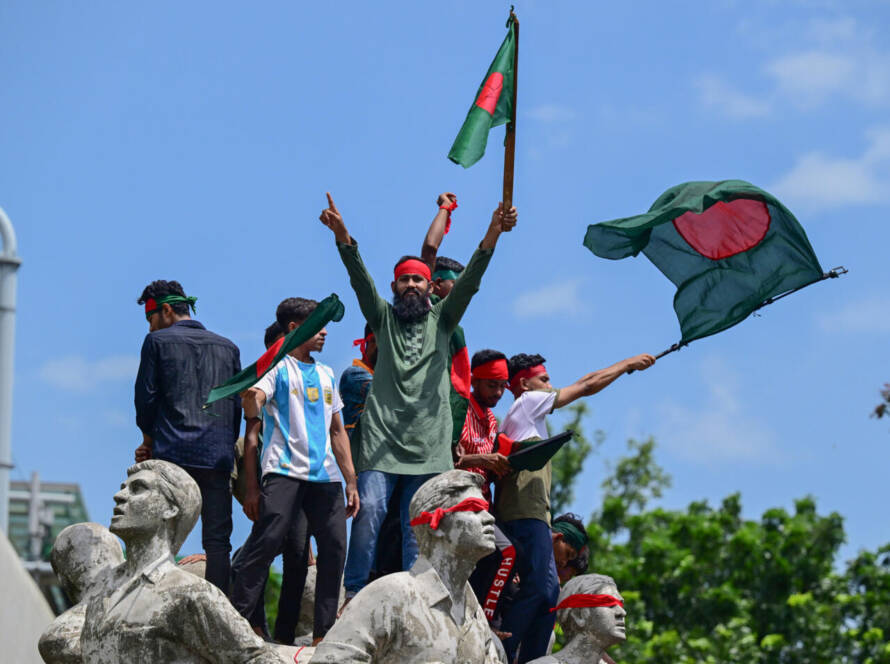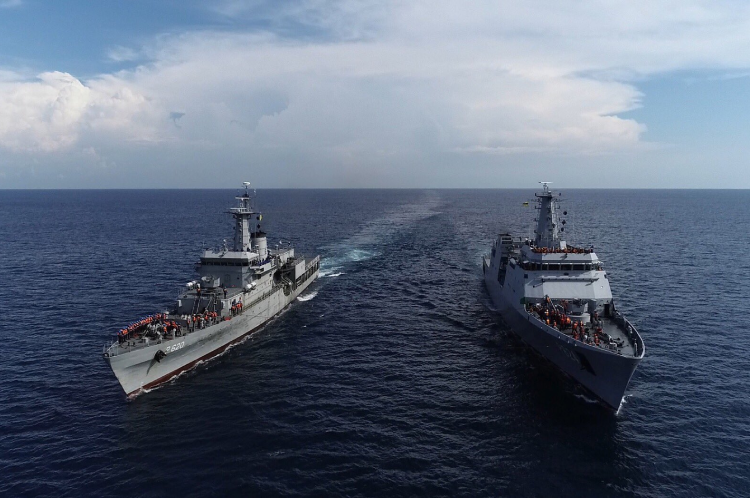By M.S.M.Ayub
Tensions between Russia and its neighbor Ukraine is not a manifestation of a clash between the security interests of the two nations. It is indeed the current avatar of the old Cold War that many believe had ceased after the collapse of the USSR in 1991. Is there a danger of Russia invading Ukraine, as told by US-UK led Western media?
Media claims have been rife that Russia has amassed over 100,000 troops on Ukraine’s border based on a statement by the Russian Defence Ministry that its forces were entering Belarus just north of Ukraine, to conduct joint military exercises. This has resulted in predictions that a Russian invasion of Ukraine within days is imminent.
The US State Department had by January 24 ordered families of U.S embassy employees in Ukrainian Capital Kyiv to leave the country and had authorized some U.S. government employees to depart due to potential Russian military action. This was in fact an update to a US travel advisory, which is in place for the US citizens in Ukraine at level four, the highest level, owing to the COVID 19 pandemic.
The U.S. last month authorized an additional $200 million in defensive aid to Ukraine, and the first shipment which contained around 90 tonnes of “lethal aid” for the Ukraine defensive forces had arrived in Kyiv on January 22 followed by another 80 tonnes of military equipment next day.
Britain, has remained in close sync with U.S. in almost all military adventures carried out by the latter across in the past several decades, mostly on flimsy grounds, said Monday that it too was pulling some members of its embassy staff out of Kyiv. NATO is putting forces on standby and sending additional ships and fighter jets to its deployments in Eastern Europe.
Some former USSR nations have come forward to send military aid to Ukraine. Three Baltic nations, Estonia, Latvia and Lithuania planning to send US-made anti-tank and anti-aircraft missiles to Ukraine, according to US Secretary of State Antony Blinken. One of the grumbles of Russia is that the West is using the countries of the former Soviet Bloc against its security interests.
The Baltic countries in a statement on January 22 said that Estonia would provide Ukraine with Javelin anti-tank weapons, while Latvia and Lithuania were sending Stinger anti-aircraft missiles and other related equipment to bolster Kyiv’s defensive military capabilities. In another highly dramatic development Estonia is seeking Germany’s approval to send Soviet-made howitzers, which once belonged to East Germany, another member of the former Socialist Bloc, to Ukraine. This amounts to using Russian weapons against Russia.
The crux of the matter is the question if Russia in fact prepares to invade Ukraine and if the actions by the US and its allies are proportionate to the situation on the ground. Sky News states the only non-essential staff of the British High Commission in Kyiv are being pulled out and that the High Commission remains fully operational. Claiming that there was “a very serious risk” of Russian invasion, British Deputy Prime Minister Dominic Raab told the BBC’s Sunday Morning programme on January 23 it was “extremely unlikely” British troops would be sent to defend Ukraine, as the country was not a NATO ally.
EU response to the situation raises doubts on the US claims as member states have shown hesitancy to back the level of sanctions the U.S. has proposed over any Russian military action against Ukraine. O January 24, top European Union diplomat Josep Borrell said the bloc was “not going to do the same thing” as the U.S. and the U.K. with its embassy staff, “because we don’t know any specific reasons.”
Russia has denied the invasion claim by the US and its allies but has not refuted reports over amassing troops along the Ukrainian border and sending forces to Belarus for military drills. This is understandable. If Russia is really preparing for an invasion, there is a likelihood it will not admit the same until its tanks rolled into Kyiv.
The government of Ukraine, the country the US and its allies have pledged to protect embarrassed its protectors by downplaying the claims of a Russian invasion. Ukraine’s defence minister thanked the US for its military aid. However its Foreign Ministry Spokesperson Oleg Nikolenko said “We consider such a step by the American side premature and a display of excessive caution.” He said there had been “no radical changes” in the security situation along his country’s borders. This could be a fact but could also be a statement to pacify Moscow for the moment.
This is big power play here. Both U.S. and Russia want to make Ukraine a cog in their regional hegemonic dominance. 14 countries which were former republics of USSR and Yugoslavia as well as the former socialist countries in the Eastern Europe – have joined the NATO. Russia wants to prevent this trend from continuing and minces no words in this regard. Russian President Vladimir Putin has issued demands to the West, that Ukraine be prevented from joining the NATO military alliance. Putin views Ukraine as an extension of what he calls “historical Russia” — a part of the Russian Empire and Soviet Union, and within Moscow’s “sphere of influence” today. However, the U.S. argues that countries have a right to choose their own allies.
Russia also wants NATO arms out of Eastern Europe, a ban on intermediate-range missiles in Europe — in effect, reinstating a Cold War-era treaty abandoned in 2019 by the Trump administration. It says Ukraine must meet its obligations under the 2015 agreements to end the fighting between Ukraine’s army and pro-Russian separatists in eastern Ukraine that has already killed over 15,000 people. The West argues that these demands violate the sovereign rights of independent countries in the region.
Against this backdrop, Russia, just like other powerful nations wants to have leaders supportive of its policies and actions in neighboring countries. The concern is its choice to penalize those countries disagreeing to do so. After a street revolution ousted the Ukraine’s pro-Russian president Viktor Yanukovych in 2014, Russia annexed Crimea which was a peninsula in the south of Ukraine later that year. Ukraine’s desire to join the Western alliance also led to Russia’s sponsorship of separatists in the country’s eastern Donbas region, fueling a civil war.
Belarus has been a cakewalk for Russia. Since mass protests in August 2020, the power of Aliaksandr Lukashenka – the country’s leader – rests mainly on the support of the Kremlin, apart from his security forces. He is so loyal to Putin and has threatened to station Russian nuclear weapons in Belarus and promised to fight against Ukraine if needed. In Kazakhstan, an oil rich nation, it was mainly the troops from Russia that quelled the violence against the ironic fuel price rises in early January.
In essence, the West takes steps to isolate Russia by admitting countries of the former Soviet Bloc into the NATO while Russia wants to prevent it from happening and be the leader of the region. The conflict of interests of these two powers would occasionally be indicated in various clashes in countries in the region. This time it is being manifested in Ukraine. If war breaks out, it would be the Ukrainian people who are going to pay the price, not the West or Russia.
Russian leaders knew from the day the Soviet Union collapsed in 1991 that the West would do everything possible to weaken their country. Hence immediately after the USSR was dissolved Russia declared an alliance of countries called the Commonwealth of Independent States (CIS) encompassing most of the 15 former Soviet republics.
Russia during the same period gave leadership to form an intergovernmental military alliance called Collective Security Treaty Organisation (CSTO) in Eurasia that consisted of selected post-Soviet states. It was the 2,500 strong troops of CSTO, mainly soldiers from Russia, but also from member states Belarus, Kyrgyzstan, Armenia and Tajikistan that was deployed to quell the violence in Kazakhstan this month. This incident also showed that Russia would not allow threats against the leaders loyal to its intentions in the neighboring countries.
Many observers claim that the world is unipolar after the Russia led Socialist bloc collapsed. One look at regional power dynamics in this case, the Middle-East, Balcans, Eurasia, Europe or Asia, it is clear the world is anything but.
(The Writer is an International Affairs Columnist specialising in regional politics in the Middle East and South Asia. He is reachable via ayub938151@gmail.com.)
***************
Disclaimer – Factum is a Sri Lanka based think-tank providing international relations analysis and public diplomacy consultancies in Sri Lanka and Asia. Visit – www.Factum.LK


